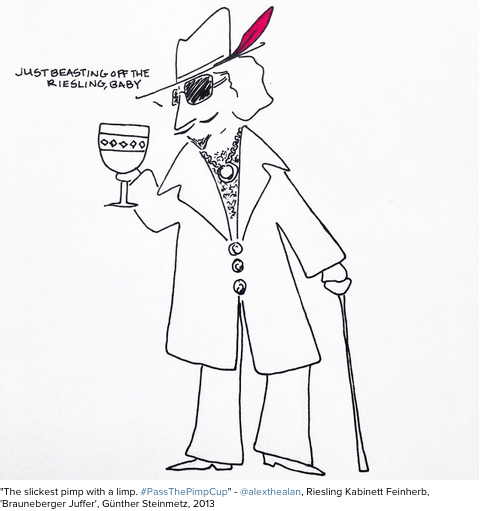
Historically speaking, a traditional luau is a far cry from the whole production you see today: Tourists in Tommy Bahama shirts getting wasted on piña coladas and feasting on bastardized, uninspired renditions of “Hawaiian food” while fire dancers spit flames. With origins in Hawaiian religious practices, luaus were originally referred to as ‘aha’aina, meaning “to gather for a meal.” They were held to celebrate things like victories at war, your baby surviving its first year, and other such occasions. These meals would involve raw fish, taro, and pig cooked in an underground oven known as an imu, all eaten by hand on the floor.
The feasts were meant to honor the gods and celebrate unity, but oddly enough they were segregated affairs. This was dictated by a law called Ai’Kapu from the Kapu law code—a universal system that directed people’s lives on every level, from lifestyle to politics, religion, and even acceptable roles for each gender. According to the law, women and commoners weren’t allowed to partake in delicacies such as pork, reef fish, and most bananas. That law remained in effect until King Kamehameha II decreed that the women of his court could eat with him during the feast, making all the celebratory food available to everyone, no matter their social stature or gender.
Following the equalization of sexes, the ‘aha‘aina became known instead as a lū‘au—a name taken from a popular dish of chicken or squid cooked in coconut milk and taro leaves. Imagine that: a feast to celebrate community—in which food played such an important role they named the party after a dish—that also brought about social and gender equality. Pretty sick.
Fast-forward to today, and when it comes to tourist traps, there’s nothing quite as wonderfully inauthentic as a big Hawaiian hotel luau. From faux regional cocktails to lackluster, Westernized takes on island cuisine, the luau has served for decades as a sort of stationary Disneyland ride for tourists who want to come and experience an authentic Hawaiian feast. And when it comes to the food, commercial luau cuisine is one that has never been more stagnant—embodying the stereotypical worst of Hawaii’s cuisine.
For native Hawaiians, the luau has changed, too. It’s now something more of a potluck held among family and friends in someone’s backyard or a local park, celebrating high school graduations or birthdays. And yet commercial luaus have remained more or less the same over the past 30 years: peddling toned-down versions of traditional dishes, a sort of Hawaiian-Asian fusion.
Why is it so hard to find inspired authentic Hawaiian food at a luau? Chef Alan Wong, one of the chefs credited with the creation of the Hawaiian regional cuisine movement, points to tourism and hotels’ tendency to play it safe. That isn’t surprising, considering the more than 8.4 million visitors Hawaii received in 2014.
“The hotels who put on the luaus know their audience,” says Wong. “You will see dishes like salads and cold preparations and things that aren’t Hawaiian, because they think they aren’t going to like it otherwise. But I think the public and tourists really do want to go deeper; they’re more accepting now and more open. The problem is, people don’t know what Hawaiian food is. You know what cracks me up? When you put a slice of pineapple on something, you can always call it Hawaiian. People put a slice of pineapple on a burger and they call it the Hawaiian burger. Hawaiian pizza. Cracks me up. Pineapple isn’t even originally from here.”
At the end of the day, these kitschy affairs have very little to do with old Hawaiian cuisine. “Today’s luau that you might find in a hotel is definitely not a luau that you would have found 100 years ago,” Wong tells me. Those luaus have little to do with modern Hawaiian cuisine, as well.
That is, until now. With the help of some of the biggest names in the Hawaiian food scene, such as Roy Yamaguchi, Wong, and the state’s newest crop of young cooks, Hawaiian chefs are beginning to take on the culinary shortcomings of luau cuisine by creating something new and uniquely Hawaiian: the urban luau.
“I think it’s really important to be having these type of luaus, which are modern and in an urban environment,” chef Yamaguchi tells me. He recently threw just such an event with Alan Wong and Denise Yamaguchi for Hawaii’s nonprofit Food & Wine Festival. “It’s tradition meeting the future and the modernization of Hawaii. I really want the rest of Hawaii to see what we can offer from an urban luau setting, where new ideas can come out.”
With a focus on Hawaiian produce, fish, and meat, as well as relying on local farmers, the urban luau interprets traditional flavors and ingredients while reflecting the modern cuisine of Hawaii. That may sound like a no-brainer, but considering that between 85 and 90 percent of the food in Hawaii is imported from the mainland, it’s actually revolutionary.
![Dane Nakama, Hawaiʻi Food & Wine Festival [6]](https://i0.wp.com/images.vice.com/munchies/wp_upload/Dane-Nakama-Hawai%CA%BBi-Food-Wine-Festival-6.jpg)
Top Chef alum Lee Anne Wong, the mastermind behind Hale Ohuna and KoKo Head Café, refers to the urban luau as a reinvention of traditional Hawaiian dishes. “It has the ingredients and original flavor profile, just presented in a new and exciting manner,” she says. “What you see now also are these chefs working side by side with local fishermen, ranchers, farmers, and producers to showcase Hawaii’s unique products, building more sustainable businesses and practices. While this is commonplace on the mainland (the farm-to-table concept), it takes on a whole new meaning when you operate a business on a rock in the middle of the Pacific Ocean, and it is not only born out of the desire to support local economy but also out of necessity. We are returning to our roots, and combining modern techniques and technology to create a new style of aloha with our cuisine.”
![Dane Nakama, Hawaiʻi Food & Wine Festival [2]](https://i0.wp.com/images.vice.com/munchies/wp_upload/Dane-Nakama-Hawai%CA%BBi-Food-Wine-Festival-2.jpg)
Sheldon Simeon, the chef at Migrant restaurant in Wailea, believes this new phase of Hawaiian cuisine is the result of the many phases Hawaiian food has gone through, in all its multicultural complexity. “What I do think has changed is the understanding of what exactly Hawaiian cuisine is—Hawaii is a crazy hodgepodge of flavors, all shaped by its history of settlers and immigrants.”
Like Simeon, chef Chris Kajioka of Hawaii’s highly anticipated CK restaurant thinks that the Hawaiian cuisine of the past has served as inspiration for the contemporary food movement. “I think the new generation of chefs is looking further back to ancient traditions and seeing what relevance they can play to now.”
Because of that, the luau has finally been able to enter the modern world. Confronting the stagnant cuisine of a commercial luau—one of the last remaining relics of a time when Hawaii had little to offer in terms of a food scene—signifies the seriousness, vitality, and sheer magnitude of this latest food revolution.
And it will continue to spread—from LA’s growing poke obsession to the influx of Hawaiian restaurants in New York and San Francisco, and beyond.



![Dane Nakama, Hawaiʻi Food & Wine Festival [5]](https://i0.wp.com/images.vice.com/munchies/wp_upload/Dane-Nakama-Hawai%CA%BBi-Food-Wine-Festival-5.jpg)
![Dane Nakama, Hawaiʻi Food & Wine Festival [3]](https://i0.wp.com/images.vice.com/munchies/wp_upload/Dane-Nakama-Hawai%CA%BBi-Food-Wine-Festival-3.jpg)

![Dane Nakama, Hawaiʻi Food & Wine Festival [6]](https://i0.wp.com/images.vice.com/munchies/wp_upload/Dane-Nakama-Hawai%CA%BBi-Food-Wine-Festival-6.jpg)
![Dane Nakama, Hawaiʻi Food & Wine Festival [2]](https://i0.wp.com/images.vice.com/munchies/wp_upload/Dane-Nakama-Hawai%CA%BBi-Food-Wine-Festival-2.jpg)
![Dane Nakama, Hawaiʻi Food & Wine Festival [7]](https://i0.wp.com/images.vice.com/munchies/wp_upload/Dane-Nakama-Hawai%CA%BBi-Food-Wine-Festival-7.jpg)






